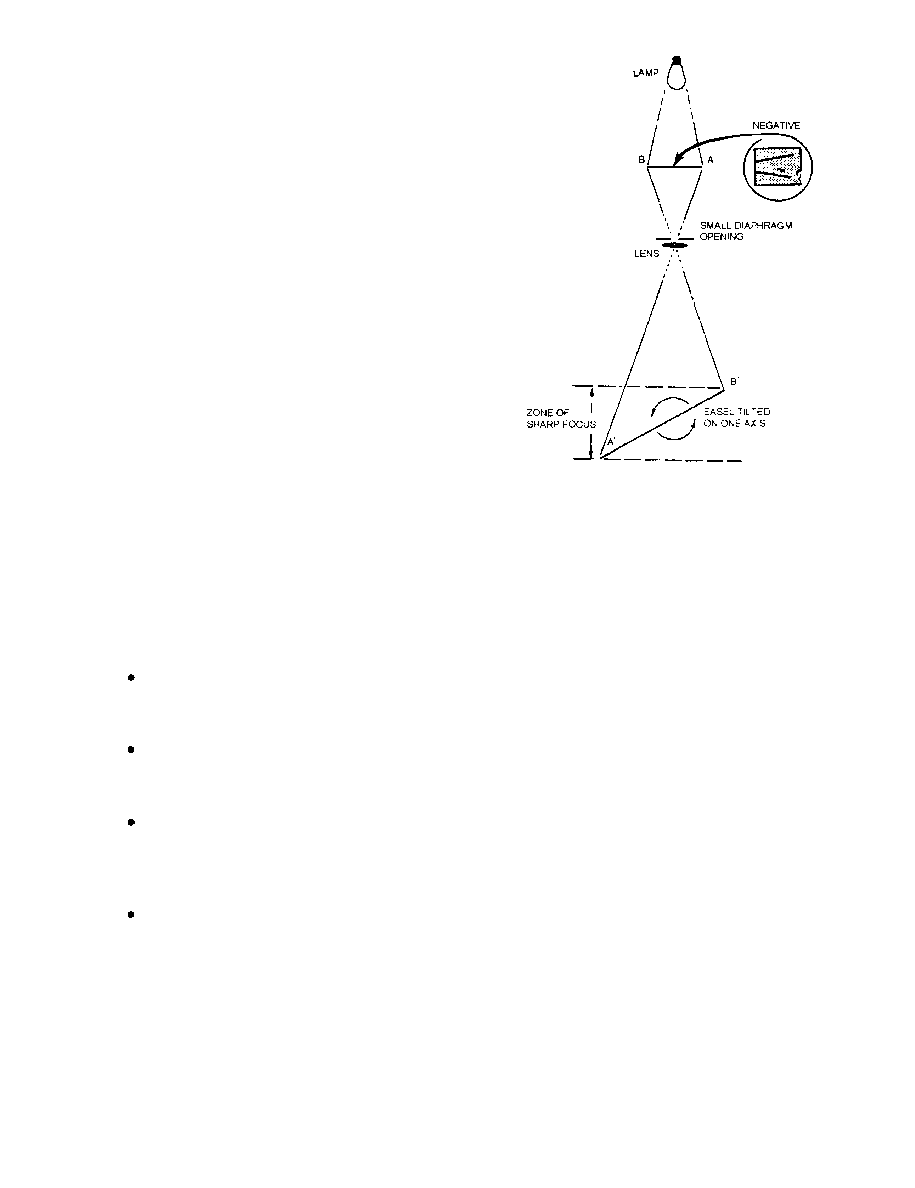
DOFMaster
for Windows
On-line
Depth of Field
Calculator
DOFMaster for Mobile Devices
On-line
Depth of Field
Table
Hyperfocal
Distance Chart
Articles
FAQ
Recommended
Books
Support
Contact
Links
Home
for Windows
On-line
Depth of Field
Calculator
DOFMaster for Mobile Devices
On-line
Depth of Field
Table
Hyperfocal
Distance Chart
Articles
FAQ
Recommended
Books
Support
Contact
Links
Home
As an Amazon Associate I earn from qualifying purchases.
![]()
of the enlarger and the density of the diffusing material.
Diffusing tends to lower image contrast; therefore, you
may need to use a higher contrast printing filter than
normally required for a given negative. The exposure
through the diffusing material should be about one third
of the total required exposure time.
(uncorrected) print, using the basic exposure determined
with your test strips. Study this print and determine the
location(s) you are going to dodge, burn in, and so forth.
The application of these techniques may appear
time-consuming, but you will make professional-
quality prints that are rich in detail and mood.
silver. Because of this silver grain structure, enlarge-
ments, especially large ones, may appear "grainy." The
graininess of a print is a direct result of the graininess of
the negative and the degree of enlargement. The
graininess of a print, however, may be modified to a
limited extent during the printing stage by the following
print.
smooth, glossy paper.
Crumpled cellophane, fine mesh screen, or a piece of
nylon stocking can be used as a diffuser.
print to be viewed from a relatively great distance, more
graininess can be tolerated as compared to a smaller
print held in a person's hand for viewing.
collapsing. A view camera is equipped with
movements that allow the film to be parallel, or nearly
so, with the subject, in spite of the viewpoint;
an undesirable, noticeable convergence of lines.
head on some enlargers or by tilting the easel and
paper to correct image distortion (fig. 11-17).
tilted by blocking it up on one end. A small
diaphragm opening (high f/stop) must be used to
increase the depth of focus to include both the part
of the easel nearest the lens and the part of the easel
farthest from the lens. Within the limits of what you
can keep in focus, you can correct some or all of
the distortion. With some enlargers, you can tilt the
negative carrier by propping up one side with one
or more coins.
Basic Photography Course

As an Amazon Associate I earn from qualifying purchases.
WWW.DOFMASTER.COM
© 2006 Don Fleming. All rights reserved.
© 2006 Don Fleming. All rights reserved.